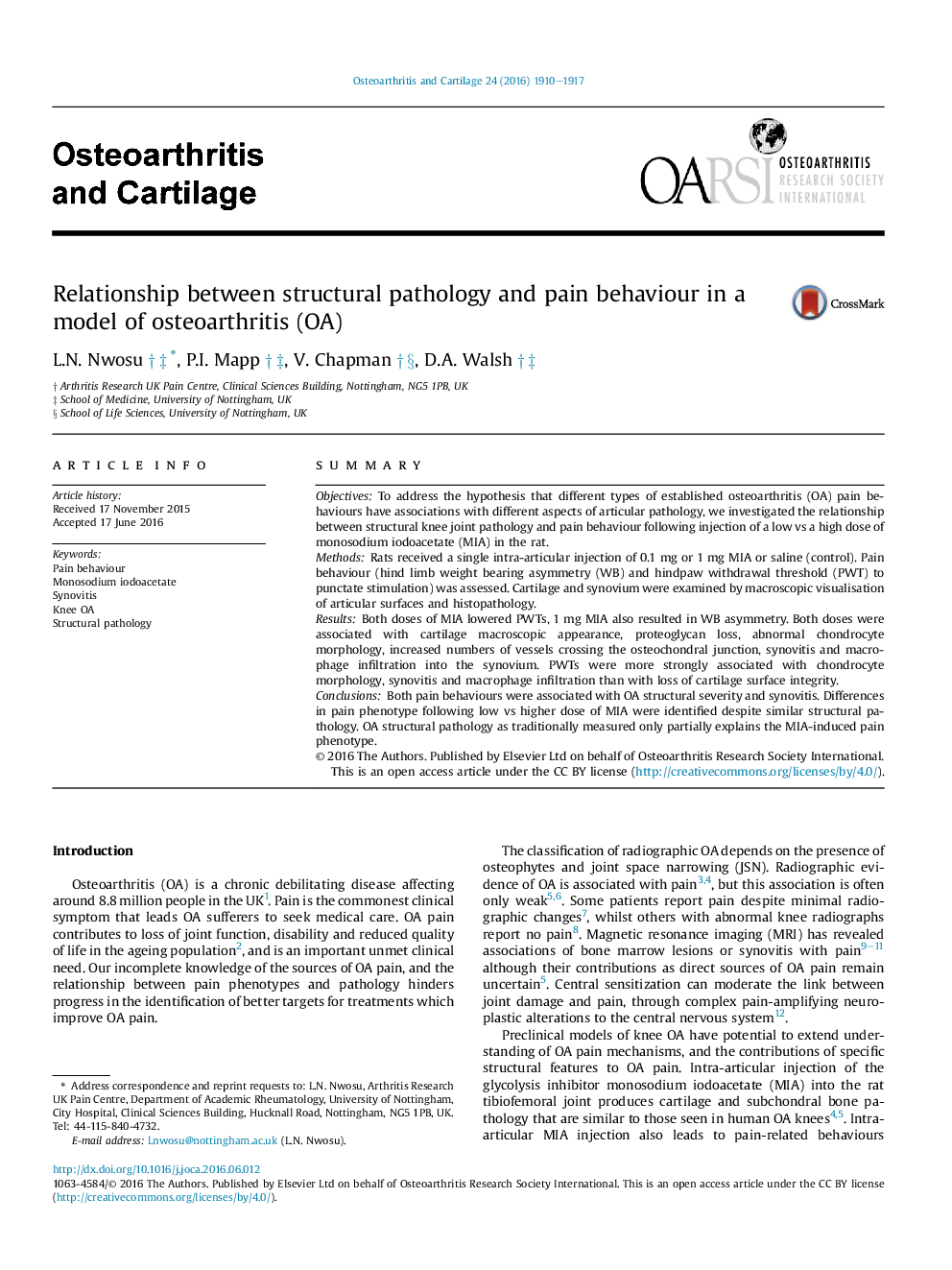| Article ID | Journal | Published Year | Pages | File Type |
|---|---|---|---|---|
| 5669355 | Osteoarthritis and Cartilage | 2016 | 8 Pages |
SummaryObjectivesTo address the hypothesis that different types of established osteoarthritis (OA) pain behaviours have associations with different aspects of articular pathology, we investigated the relationship between structural knee joint pathology and pain behaviour following injection of a low vs a high dose of monosodium iodoacetate (MIA) in the rat.MethodsRats received a single intra-articular injection of 0.1Â mg or 1Â mg MIA or saline (control). Pain behaviour (hind limb weight bearing asymmetry (WB) and hindpaw withdrawal threshold (PWT) to punctate stimulation) was assessed. Cartilage and synovium were examined by macroscopic visualisation of articular surfaces and histopathology.ResultsBoth doses of MIA lowered PWTs, 1Â mg MIA also resulted in WB asymmetry. Both doses were associated with cartilage macroscopic appearance, proteoglycan loss, abnormal chondrocyte morphology, increased numbers of vessels crossing the osteochondral junction, synovitis and macrophage infiltration into the synovium. PWTs were more strongly associated with chondrocyte morphology, synovitis and macrophage infiltration than with loss of cartilage surface integrity.ConclusionsBoth pain behaviours were associated with OA structural severity and synovitis. Differences in pain phenotype following low vs higher dose of MIA were identified despite similar structural pathology. OA structural pathology as traditionally measured only partially explains the MIA-induced pain phenotype.
